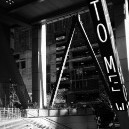MM, M240, MM246 comparison images
-
Recently Browsing 0 members
- No registered users viewing this page.
-
Similar Content
-
- 4 replies
- 555 views
-
- 10 replies
- 990 views
-
- 562 replies
- 91,988 views
-
CL - The Image Thread 1 2 3 4 735
By Daedalus2000,
- 14,699 replies
- 992,298 views
-
- 7,194 replies
- 943,103 views
-




Recommended Posts
Join the conversation
You can post now and register later. If you have an account, sign in now to post with your account.
Note: Your post will require moderator approval before it will be visible.